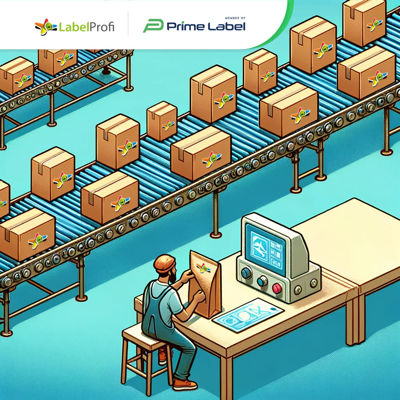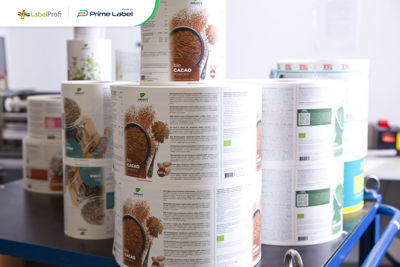How to Design an Eye-Catching Beverage Label
12/11/2023
It only takes five to seven impressions before your business starts building brand awareness with a customer. Consistency and repetition over time are key. Otherwise, consumers will never remember your brand.
About 60% of consumers prefer to purchase from familiar brands. You need to boost brand awareness and recognition.
Your customers might turn to your competitors if they don't recognize your brand on the shelf.
With a wow-worthy beverage label, you can draw in potential customers and boost your brand.
Consistent branding can boost revenues by up to 23%. In time, you can turn recognition into brand loyalty. You can retain long-term customers and set your business up for growth.
Want to design the best food and beverage labels your customers have ever seen? Keep reading for the tips you need!
Get ready to wow your target audience with these beverage label design tips today.
1. Measure the Bottle
Before you start designing your beverage label, take a moment to consider the bottle. Different bottles come in a variety of shapes and sizes. You'll need to design your label with the bottle you intend to use in mind.
You can find a printable ruler online to get the measurements you need. Wrap the ruler around the bottle and record the dimensions.
Are you planning on creating a full-wrap label? Make sure to add 1/4" to the end measurements. That way, you can ensure the label overlaps at the end.
2. Consider Your Brand
Only 25% of companies have formal brand guidelines. If you're not following brand guidelines, you could struggle to maintain consistency. Inconsistent branding could confuse your customers.
Meanwhile, you'll fail to build brand recognition.
Instead, take the time to consider your target audience and company brand.
First, research as much as you can about your target audience. What do they care about? What products do they already use and love?
You can learn more about your target audience by creating distinct buyer personas based on:
Age
Gender
Location
Household income
Education
Marital status
Buying behaviours
Career
Pain points
Interests
Hobbies
Daily challenges
Values
Style
Habits
You don't want to create a brand that's mismatched with your target audience. You'll struggle to attract and appeal to consumers otherwise.
If you already have a well-defined brand, that's great! Make sure to keep your brand guidelines handy. Otherwise, consider every component of your brand, including your:
Vision
Mission
Voice
Tone
Personality
Logo
Colour palette
Font styles
Imagery styles
Think about your unique value proposition, too. What sets you apart from other beverage companies? Think about the mood you want to evoke in your customers as well.
How do you want them to feel when they see your beverages on the shelf?
You'll want to create a beverage label that complements your existing brand.
3. Determine Your Visual Identity
The visual elements you choose will help communicate your brand. There are different visual components you'll need to consider, including:
Colour
Typography
Imagery
Copy
Each element should complement one another and tell a story about who you are.
It's important to choose each visual component with care. Think about the message you want to convey.
For example, let's say you want to look old-fashioned. You might consider using Papyrus as your font style. If you want to look conservative and traditional, use Times New Roman.
Explore different visual components to determine what best suits your brand.
Consider Colour Psychology
Colours can evoke specific emotions. For example, we often associate red with passion and love. It can also communicate importance and attention.
Here's a cheat sheet you can use to evoke different moods with your beverage label design:
Black: powerful, edgy, sophisticated
Gray: subdued, neutral, gloom
White: clean, healthy, virtuous
Pink: feminine, youthful, innocent
Brown: rugged, old-fashioned, earthy
Orange: friendly, vitality, playful
Green: nature, growth, stability
Yellow: happiness, warning, optimism
Purple: royalty, luxury, creative
Dark blue: formal, professional, security
Light blue: trust, tranquillity, open
Using a distinct colour can improve brand recognition by up to 80%. Try to use a unique shade. For example, instead of red, go a few shades lighter for crimson.
Don't forget to look at the bottle before choosing your label colours.
Are you using clear glass jars, cans, or brown beer bottles? Make sure the colours on your label and the bottle mesh together. Otherwise, you could create a visual mess.
For example, placing an elegant, chocolate-brown label on a green bottle might make it look muddy.
Limit using bright, neon colours, which might look overwhelming in large doses. Instead, use them as hints of colour against darker hues.
Choose Your Typography and Imagery
The typography you choose for food and beverage labels can impact your brand, too. Do you want to follow the trends or become a trendsetter? Do you want a creative font or a more traditional look?
Make sure the typography you choose matches your brand's identity.
For example, Georgia or Times New Roman can create a more traditional look. Maybe you want to use a font that mimics a fountain pen or typewriter. These fonts can communicate authenticity.
You can convey the handmade quality of your product as a result.
If you choose a cursive font, make sure it's legible. You don't want people to struggle to read your label content.
Next, you'll need to consider your imagery. Again, think about your brand. What message are you trying to convey?
If you're going for a more playful mood, choose cartoon characters or playful iconography.
If you want to look cool and sleek, consider a minimalistic approach.
Either way, the imagery should complement the look and feel you're trying to communicate. Make sure your imagery will appeal to your target audience. Otherwise, you might scare them away.
Write It Out
Once you have the essential components of your visual identity ready, consider your copy.
You'll want to say as much as possible without much text. Too much text on your beverage label can make it look cluttered. People might have to squint to read a tiny font, too.
Try to describe your product in a way that's tantalizing and tempting. Draw people in.
Consider hiring a professional copywriter if you need help. Make sure their copy matches the voice and tone of your brand.
Using the right adjectives can help you draw in customers. For example, you can use "decadent chocolate" over "milk chocolate."
Before finalizing your copy, make sure it abides by the necessary legal requirements.
For example, alcoholic products have to list net contents and alcohol content. They need to label the beverage class and type, too. These products also have requirements for font size and legibility.
Remain up-to-date regarding any labelling requirements for your industry.
Otherwise, you could come across regulatory issues in the future. You'll have to take your beverages off the market to fix the problem. The situation could prove costly as a result.
Instead, get ahead of the problem. This food labelling guide from the FDA can help.
4. Imagine the Material
The material you choose is an important aspect of your beverage label as well. Ordering the wrong material for the bottle, you're using can waste time and money.
For example, do you plan on using glass bottles? Consider choosing a label with clear backing. The contents of the bottle will shine through as a result.
You'll have an easier time conveying a modern, sleek brand.
For plastic bottles, however, consider labels with a matte finish. Plastic bottles have to endure outdoor elements. A matte finish will ensure the label stands out, regardless of what the label endures.
If necessary, you'll have an easier time writing on matte labels using a permanent marker, too.
Different bottle label printing materials include:
White matte
White gloss
Clear matte
Clear gloss
Metallic silver
Would you prefer to create a metallic or foil label? These labels are ideal for alcoholic beverage labels. You can show off your brand and make it look luxurious.
You'll need to consider the bottle's material while choosing the label's material. You can speak with an experienced label production company for help making a choice. They'll help you choose the right label materials with your goals in mind.
5. Add Your Special Touches
Talk to your label printer about adding special touches to your labels, too. A few special finishes can help your brand stand out. You can enhance your existing brand identity in new, creative ways.
For example, you can elevate your elegant typography with embossing.
For a clear wine bottle, consider using a cutout label. Customers can see through the design and into the label.
Consider knockout printing, too. This style is ideal for modern, fun brands.
Talk to your printers to choose the touches that are best for your brand goals.
Design It Right: 5 Tips for a Wow-Worthy Beverage Label
Designing a creative, eye-catching beverage label can help your brand stand out on a shelf. With the right design elements, you can draw in customers. Once they fall in love with your product, you can turn those one-time customers into loyal buyers.
It all starts with your beverage label design!
Need help? We're happy to lend a hand!
Contact us today to get started on your next label project.













